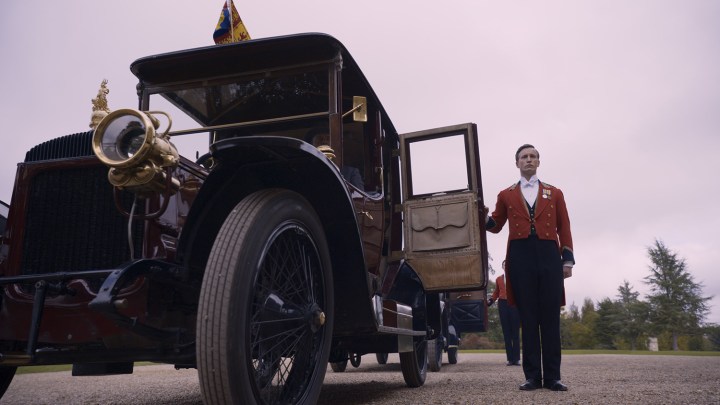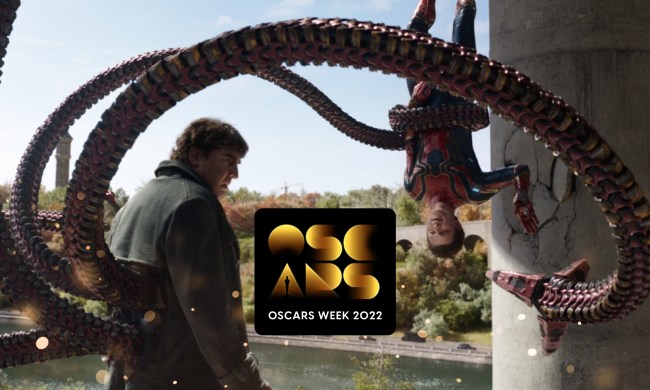
British historical drama Downton Abbey seemingly came out of nowhere to become a massive hit for ITV and PBS. The show chronicles the trials and tribulations of the aristocratic Crawley family and their domestic servants in Northern England during the early 20th century.
Over the course of six seasons, Downton Abbey became one of the most acclaimed international series in television history, earning some of the industry’s most prestigious awards. That success carried over to this year’s big-screen installment of the series, with the Downton Abbey movie debuting at the top of the box office its opening weekend (beating the premieres of both Brad Pitt’s Ad Astra and Sylvester Stallone’s Rambo: Last Blood).
A British costume drama set in 1927 doesn’t initially seem like the sort of film that demands much in the way of visual effects, but bringing the beloved TV series to the big screen was no small task for visual effects studio Framestore. Digital Trends spoke to VFX supervisor Kyle McCulloch about his work on the film and how his team turned back the clock to give Downton Abbey new life.
Digital Trends: Downton Abbey isn’t the sort of film that brings visual effects to mind. How did you get involved with the movie and what were some of the elements you worked on?
Kyle McCulloch: Well, the filmmaking team really wanted to be using as many real locations as they could, and to make it feel as realistic as the television show did, but they were coming up short in a few places — mainly the opening sequence in the period King’s Cross train station, which doesn’t exist anymore, and that era’s Buckingham Palace. I knew some of the people involved with the film because I’d done the work on Darkest Hour with [director] Joe Wright, so I went in and met with them.
Initially, it was just going to be a handful of things, the main body of which was going to be King’s Cross station, which was going to be a full CG environment. But as we moved through prep and into the shoot and actually shot the film, it turned out there were a lot of bits and bobs that they wanted to use visual effects to help with.
It’s a slippery slope once you start using visual effects …
It really is. Highclere Castle [in Hampshire, England] has always been used for the upstairs rooms where the Crawley family lives, and then the downstairs servants’ area were all sets that they shot at Ealing Studios. So the sets were rebuilt here at Shepperton Studios in London, but they really wanted to visually tell the story of seeing Highclere Castle from the outside, walking into the castle, and eventually going into the servants’ quarters, all in one shot. So that was another little bit of trickery that I helped them set up. We created a continuous shot from the yard of Highclere Castle into the sets at Shepperton and throughout the rest of it there. It was a lot of touch-up work, as a lot of the environments had little bits of modern materials left in them or didn’t look as idealized as the filmmakers felt they should. It was a lot of invisible touches.
That always seems to be the job description for visual effects artists: To make sure no one can tell you did anything at all.
Certainly, but I enjoyed it. I often work on Marvel movies or other big blockbusters, where it’s quite apparent that we’ve been there. So I really enjoyed the remit on this one, which was that people should be surprised if they stick through the credits and see that there are any visual effects at all.
Is it more challenging to work on films like this as opposed to fantasy- or sci-fi-driven projects? There’s a very real history with Downton Abbey that people are familiar with, after all.
Totally. I think the biggest difference for me, though, was the actual filmmaking team. It was a very small group of people. Many of the people on the team came from the television show. They didn’t really have a lot of experience with visual effects, so I tried to be as low-impact as I could. I needed to rethink the approach for certain tasks to be as unobtrusive and seamless for the filmmaking team as possible, so that I could deliver what they wanted without tripping everyone up.
When you do the big films, everyone’s got experience with visual effects and a big VFX department, and you’re a key part of the filmmaking team. But on this, we were like ninjas trying to stay light on our feet and stay out of everyone’s way.
What were some of the biggest challenges to working on this particular film?
For me, the biggest challenges were in doing the CG environment work and connecting seamless shots between different locations. On a bigger film, you would get motion control and a lot of tools that would help you sort of do it quick and seamlessly and in a straightforward manner, but this film didn’t necessarily have the budget for that. It would be reckless to spend the kind of money needed to do a fancy motion-control shot for a one-off element on a film like this. So the challenge was to sort of dig back through the years of doing these things and ask, “Okay, before we had all of the fancy toys, how would you have done seamless handheld camera shots like that?
I found that to be the biggest challenge, but it was really rewarding. It was like getting back to the nuts and bolts of some of this stuff that’s become commonplace on big-budget jobs.
I suspect we take a lot of that for granted now with all of the technology at our disposal. Is there a shot you’re particularly proud of in Downton Abbey? What’s the shot that immediately comes to mind when you think of this film?
In the the opening sequence, where you follow a letter from Buckingham Palace all the way to Downton Abbey, that sequence is the tool the filmmakers use to bring the audience into the world of Downton Abbey and really set the mood for the film. We did a lot of work there between the King’s Cross shots, the seamless transition shots into into the Abbey, and even the drone photography. We cleaned up and fixed the landscape, and it was just a lot of subtle touches throughout that sequence that make it really land. I’m really proud of all the stuff that we did in that sequence.

But I think my favorite shot to look at was the very last shot in the film, which is a big drone shot flying away from Downton Abbey. It looks quite simple, but there was a tremendous amount of reconstruction work that happened in it. We were fixing trees and ground and landscape and all kinds of structures, and we were fixing stuff on the castle, and removing light, and repairing the sky and all sorts of different pieces that hopefully no one knows were in there. It just looks like a pretty flying helicopter shot away from the castle, though.
What’s next for you?
I just finished on Disney’s Lady and The Tramp for the new Disney+ streaming platform, and I’m currently working on the untitled Aether project, which is George Clooney’s next film for Netflix.
Screening now in theaters, Downton Abbey premiered September 20. All six seasons of the series are also available to stream now on Amazon Prime Video.







